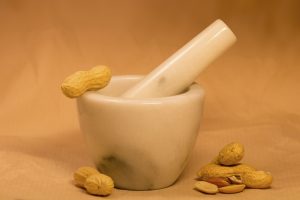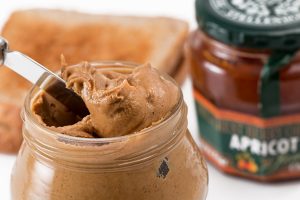
Polycystic Ovarian Disease (PCOD) or Polycystic Ovary Syndrome (PCOS) is a hormonal disorder prevalent among women of reproductive age, characterized by irregular menstrual cycles, high androgen levels, and small ovarian cysts. It can lead to health issues such as infertility, weight gain, acne, and insulin resistance. While yoga may not cure PCOD, it can help manage symptoms by activating the parasympathetic nervous system, reducing stress, and regulating hormone production. This practice lowers cortisol levels, which can worsen symptoms like irregular periods and weight gain. Specific yoga poses can stimulate the ovaries and adrenal glands for better hormone balance and enhance insulin sensitivity, aiding glucose metabolism and potentially reducing weight and improving energy. Poses like Ardha Matsyendrasana and Marjaryasana can assist in regulating insulin production. Yoga enhances ovarian function and promotes regular ovulation by regulating the endocrine system. It addresses infertility issues in women with PCOD caused by stress and hormonal imbalances through calming practices like Pranayama. Specific poses such as Shavasana, Viparita Karani, and Paschimottanasana support reproductive health. Additionally, emotional disturbances linked to PCOD, such as anxiety and mood swings, can be mitigated through mindfulness and meditation techniques. Practices like Bhramari Pranayama and Yoga Nidra induce relaxation and stabilize mood. Yoga also helps reduce excess androgen levels, alleviating symptoms like facial hair and acne, by managing stress and improving metabolism. Furthermore, it aids in balancing hormone levels through techniques like Kapalbhati Pranayama and Ujjayi Pranayama. Women with PCOD face increased risks of cardiovascular diseases due to factors such as weight gain and insulin resistance. Dynamic yoga sequences like Surya Namaskar improves cardiovascular health. Here are few yoga poses to help in PCOD condition.
- Baddha Konasana (Butterfly Pose): Baddha Konasana, or Butterfly Pose, is a seated yoga position that promotes hip opening, inner thigh stretching, and flexibility improvement. To perform the pose, sit with legs stretched out, bend the knees to bring the soles of the feet together, and draw the heels toward the pelvis while holding the feet or toes. Let the knees drop naturally and focus on lengthening the spine with deep inhales. During exhales, gently press the knees down to enhance the stretch. Holding the pose for 30 seconds to a minute allows for relaxation and deeper breathing. This pose increases blood flow to the pelvic area, potentially improving ovarian function and menstrual cycle regulation, while also relieving menstrual discomfort and addressing issues like bloating and indigestion related to PCOD.
- Setu Bandhasana (Bridge Pose): Setu Bandhasana, or Bridge Pose, is a basic backbend in yoga that stretches the spine, opens the chest, and strengthens the back and legs. It helps with hormonal balance, digestion, and stress relief, making it beneficial for managing PCOD/PCOS symptoms. To perform the pose, lie on your back with knees bent and feet flat on the floor, hip-width apart. Position your feet near your sitting bones, with heels under knees. Inhale and press your feet into the ground to lift your hips toward the ceiling while rolling your shoulders under and clasping your hands under your back if possible. Keep your thighs parallel and your chest lifted. Hold the pose for 30 seconds to a minute while breathing deeply. To release, exhale and lower your hips back to the floor.
- Supta Baddha Konasana (Reclining Butterfly Pose): Supta Baddha Konasana, or Reclining Butterfly Pose, is a restorative yoga position that helps open the hips, relax the body, and calm the mind. It is particularly beneficial for women with PCOD as it encourages relaxation, enhances pelvic circulation, and aids in regulating hormonal levels. To perform the pose, sit on the floor with legs extended, bring the soles of your feet together, and let your knees fall out to the sides. Gradually lower your back to the floor, using hands for support, and adjust your heels based on comfort. Arms can rest at your sides or on your belly. Close your eyes and focus on deep breathing while holding the pose for 3-5 minutes, using props for additional support if necessary.
- Dhanurasana (Bow Pose): Dhanurasana, or Bow Pose, is an effective backbend that stretches the front of the body, strengthens back muscles, and stimulates abdominal organs. It is particularly beneficial for women with PCOD, as it aids digestion, hormonal balance, and stress reduction. To practice, lie on your stomach with your arms at your sides. Bend your knees to bring your heels toward your buttocks. Reach back to grasp your ankles or feet and inhale while lifting your chest and thighs, forming a bow shape. Maintain a neutral neck position and hold for 15-30 seconds, focusing on chest expansion and a long spine. To exit, exhale and lower your body, releasing your ankles. Rest in Makarasana for a few breaths before repeating if desired.
- Surya Namaskar (Sun Salutation): Surya Namaskar, or Sun Salutation, is a sequence of yoga poses that includes forward bends, backbends, and stretches, providing a comprehensive workout. It is traditionally done to honor the sun, energize the body, and enhance mindfulness. For women with PCOD, practicing Surya Namaskar regularly can help with weight loss, boost metabolism, balance hormones, and reduce stress. The sequence begins with Pranamasana, where one stands with hands in prayer position, followed by Hastauttanasana, where arms are raised overhead. Next is Uttanasana, a forward bend, and then Ashwa Sanchalanasana, stepping back into a lunge. This leads into Dandasana, transitioning into a plank position. Followed by Ashtanga Namaskara, where you lower your knees, chest, and chin to the ground. Next, Bhujangasana involves lifting the chest into a gentle backbend. Then, Adho Mukha Svanasana requires lifting the hips into an inverted “V” shape. Following that, Ashwa Sanchalanasana involves stepping the right foot forward while the left knee is on the ground. Uttanasana involves folding the torso over the legs by bringing the left foot forward next to the right. Then, in Hastauttanasana, you raise your arms and slightly arch your back. Pranamasana involves returning to a prayer position. The sequence should be repeated on the opposite side, starting with the left foot back in Ashwa Sanchalanasana. It’s recommended to begin with 4-6 rounds of Surya Namaskar daily, gradually increasing as stamina improves, and focusing on breath synchronization with movements.
-Triparna







